It looked like a tiny shrine on the forest floor: Bare ground clear of debris. Two walls of sticks, bending towards one another. Blue feathers and bottle caps arranged in a wide arc. And a small plastic doll, splayed in the center of the structure, eyes wide and mouth open in a plastic scream.
But this wasn’t the scene of some pagan ritual in miniature. I’d stumbled upon the bower of a satin bowerbird.
Found throughout Australia and New Guinea, bowerbirds are famous for the elaborate and sometimes whimsical structures that males build to court females. These bowers are the largest and most elaborately decorated structure built by any animal — except humans.
Some bowerbird species are exceedingly rare, or found in very remote or threatened habitats like the highland rainforests of New Guinea. But others are easy enough to find in Australia. I’ve been lucky enough to see a few of them. And each time I encounter them, I grow even more fascinated by their ingenuity, and by the science behind their bower displays.
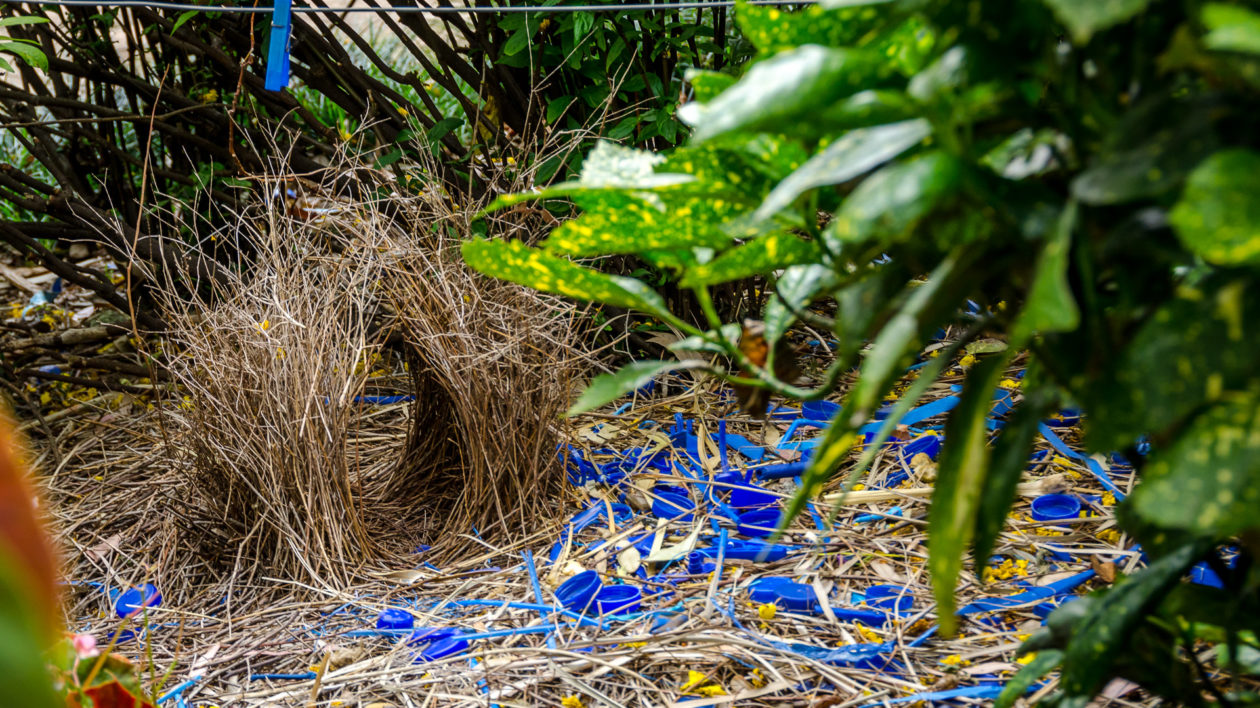
Satin Bowerbird, Lover Of Blue
Satin bowerbirds are one of the most commonly encountered bowerbirds in Australia. They live in forest habitats along the east coast, venturing into gardens and backyards where human development abuts their preferred habitat.
Male satin bowerbirds have rich, iridescent plumage that appears blue or black, depending on the light, and vivid royal-blue eyes. The females, which live in groups with a single male, have more subtle green and brown plumage that blends in with the vegetation.
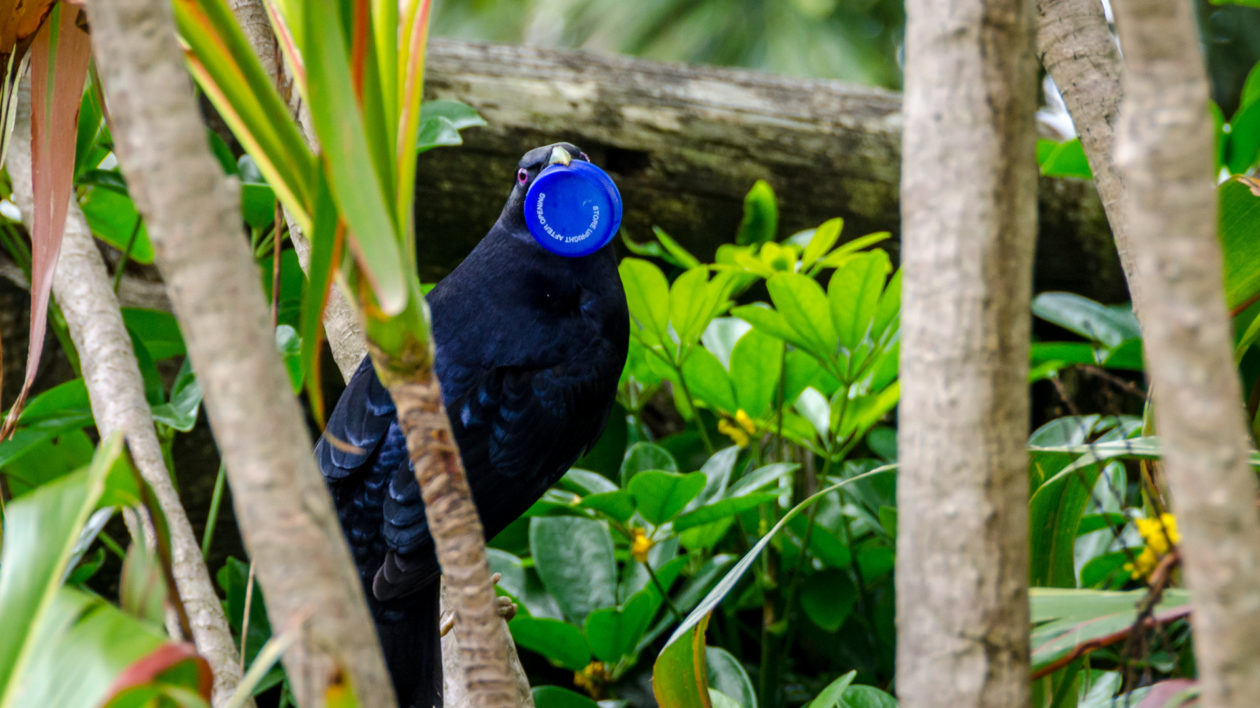
I saw my first satin bowerbird at a national park picnic area, where the male approached me multiple times, bold and inquisitive. At first I assumed he wanted a piece of my lunch, but then I realized that my shirt was the exact shade of vivid blue that he collects to decorate his bower.
Months later, I found a bower on the edge of Lamington National Park. The decorations scattered around the avenue of upright sticks were a homage to the Anthropocene: mentos wrappers, milk bottle tops, blue laundry pegs, blue hair ties, straws, cutlery, pen caps, and a few blue feathers and berries thrown in for good measure.
Even near high-quality habitat, the bird still preferred human detritus that wouldn’t fade or decay. Away from human settlement, bower decorations include blue flowers, berries, and the feathers of blue-colored birds.
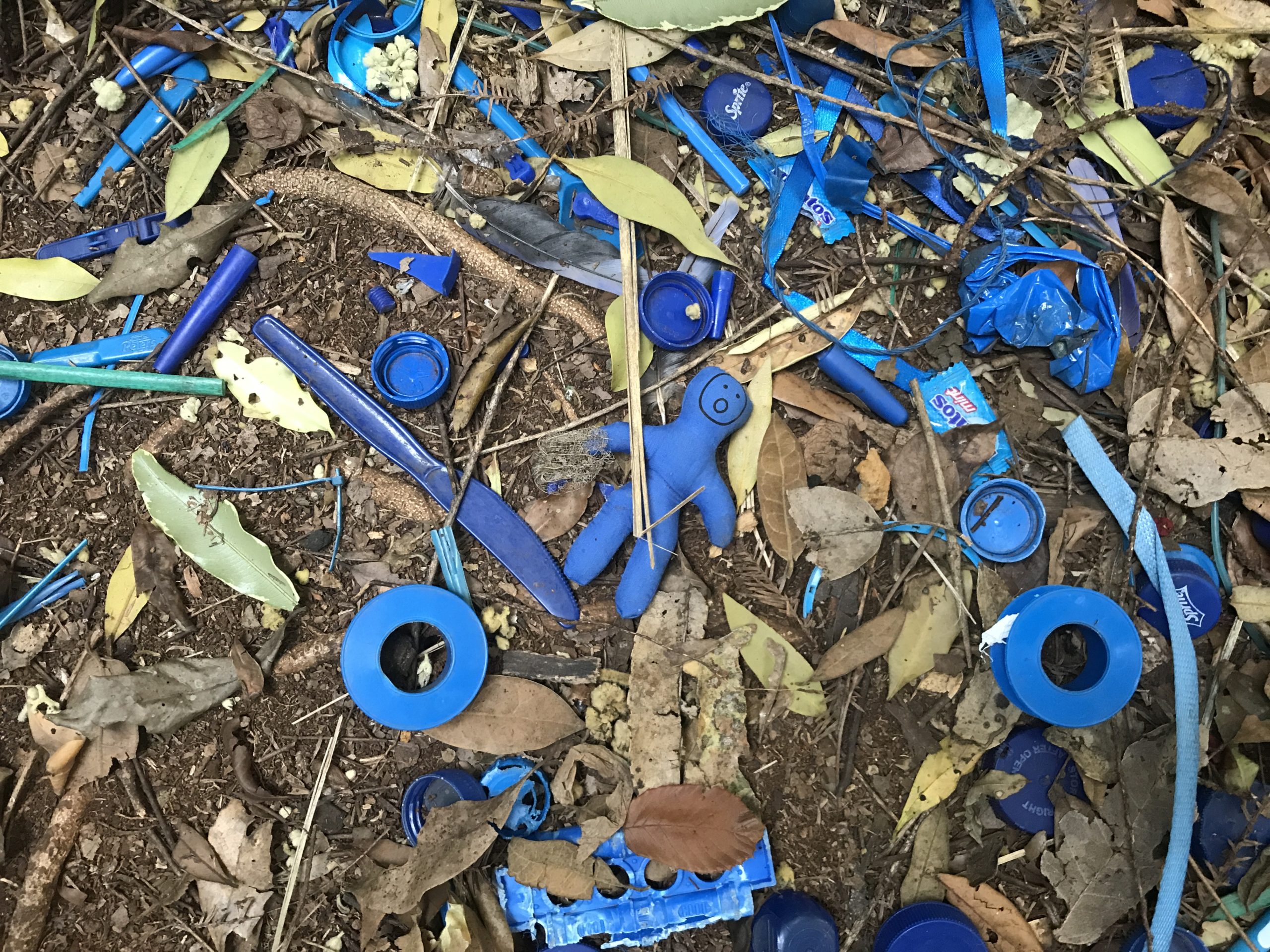
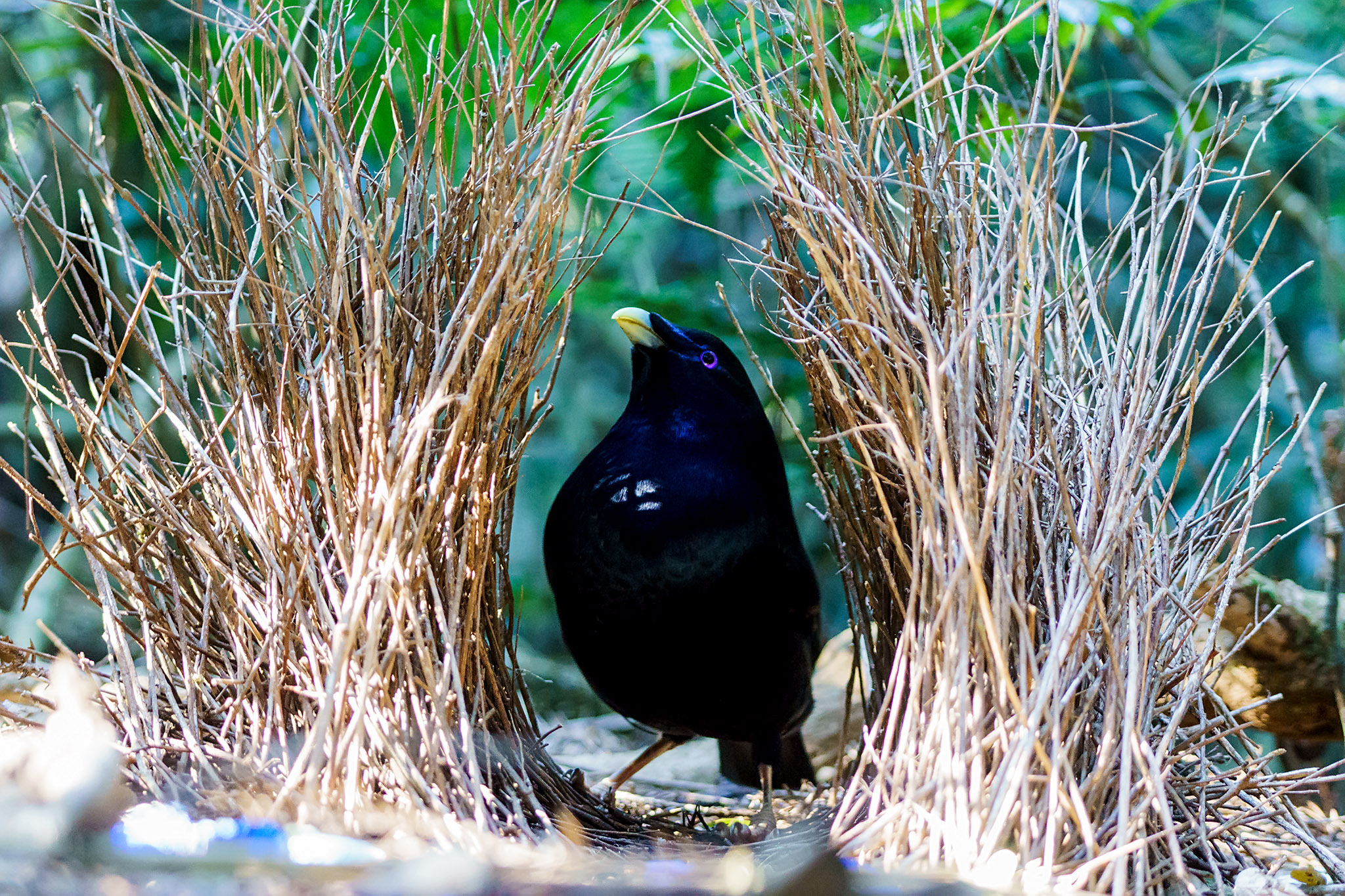
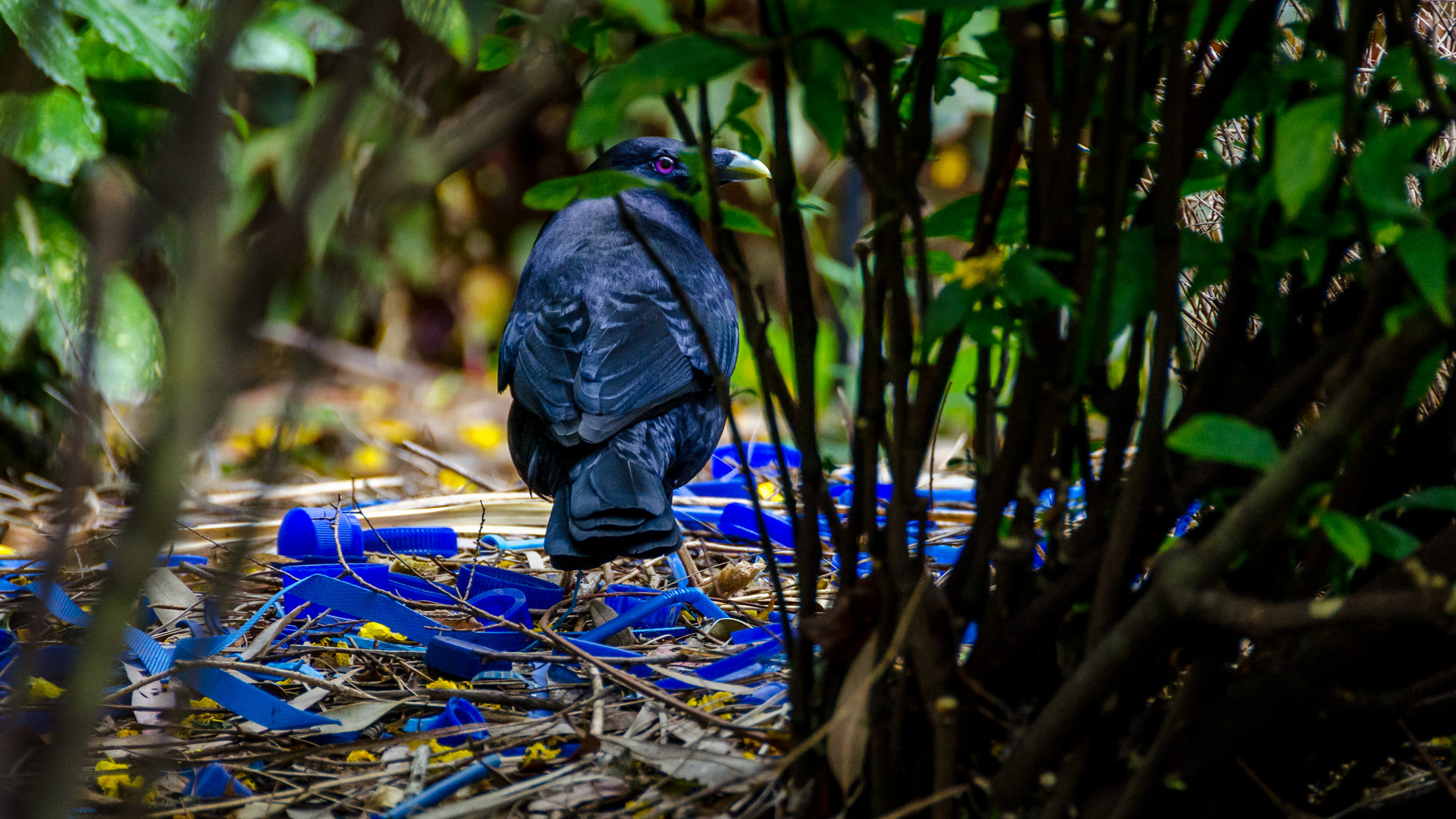
Male bowerbirds frequently sneak into one another’s territory to steal trinkets and even destroy other bowers. Juvenile males take around seven years to reach maturity, during which time they practice building bowers, displaying to other young males, and working in gangs to steal from adults.
Scientists studying this behavior discovered that the birds prefer to steal objects that reflect ultraviolet light, like blue parrot feathers and milk bottle tops. (These coveted items are also dangerous, as birds can get them stuck around their heads.)
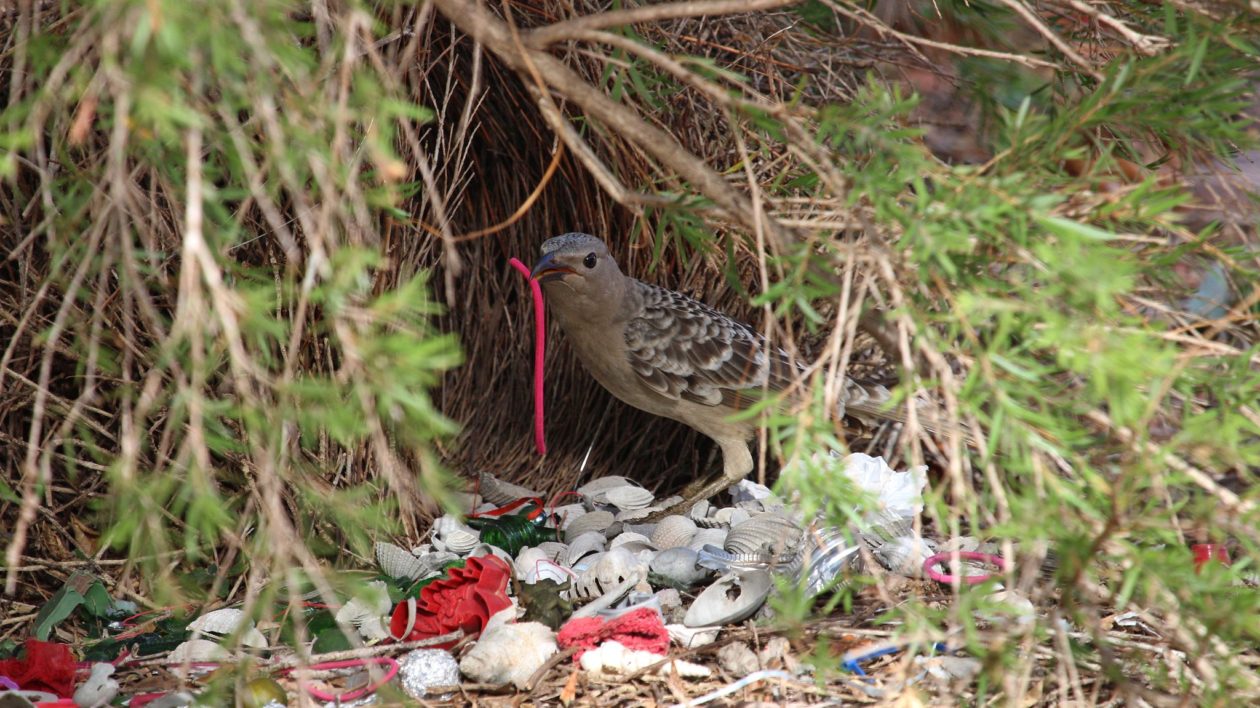
Great Bowerbird, Master of Optical Illusions
Another common Australian species is the great bowerbird, found across the top of Australia. Males and females look very similar, a drab grey-brown, but the males have a hidden crest of neon pink feathers on the top of their heads. Called a nuchal crest, they keep these feathers hidden unless they’re trying to entice a female.
Their bowers are quite similar to the upright stick avenue of the satin bowerbird, but the great bowerbird opts for a display court of grey and white, accented with red, purple, and green objects.
These birds are quite comfortable around people; I saw my first one at a campground, bopping around its bower less than 6 feet from where we pitched our tent. He decorated with white cockle shells and bones, grey pebbles, a guitar pick, a green glass marble, and aluminum pull-tabs from soda cans.
Meanwhile, another great bowerbird I spotted in a Townsville city park had a decidedly more urban collection of decor: duct tape, tin foil, a pink bra strap, purple ribbon, green cloth pegs, broken glass, candy wrappers, a baby-bottle nipple, purple flowers, green leaves, and — the pièce de résistance — a syringe.
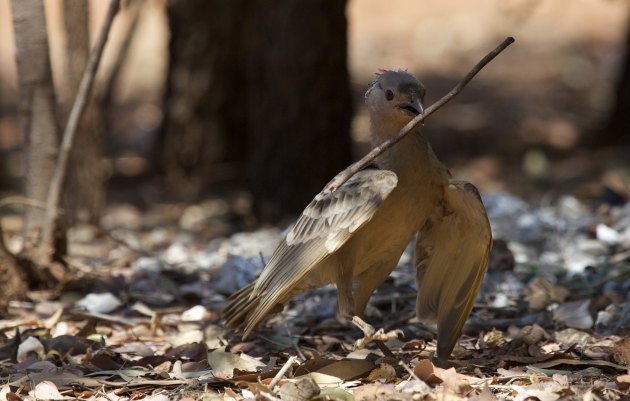
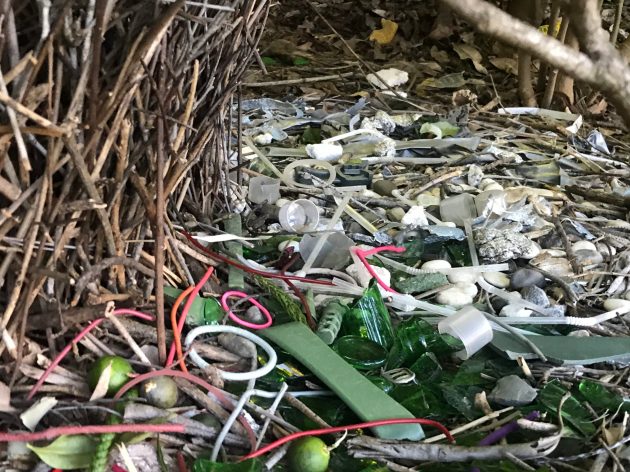
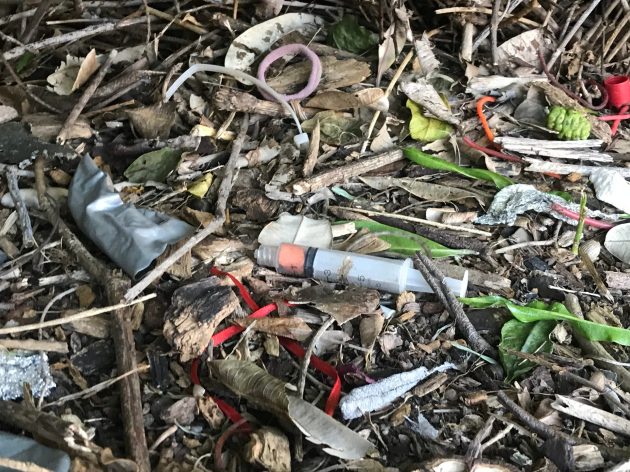
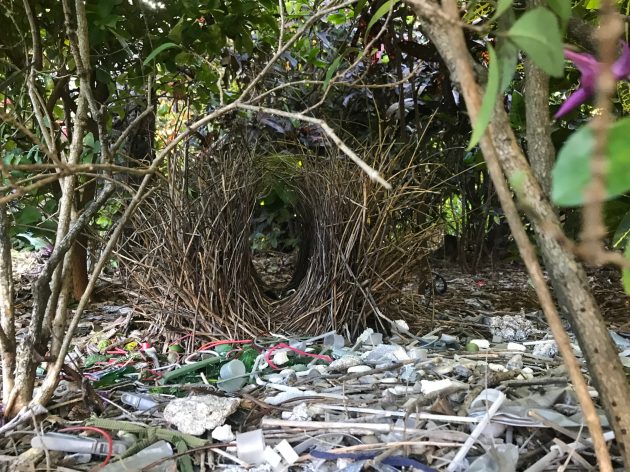
To our eyes, these bower decorations might look like a random mess. But scientists decoded the great bowerbird’s decor philosophy, discovering a sophisticated system of optical illusions.
The basic bower structure is simple: an “avenue” of upright, reddish sticks with a semi-circular display court at each end. Curious female bowerbirds sit inside the avenue, and the walls limit their visual field. Then males pop their heads in and out to surprise them, and flick or wave colored objects across the female’s field of view.
Researchers from Deakin University discovered that bower materials alter the females’ perception of color. The reddish sticks help induce “chromatic adaptation,” which creates a more heightened experience of red, green and lilac colors. Not coincidentally, those are the exact colors great bowerbirds use to decorate their bowers, and the colors on their nuchal crest.
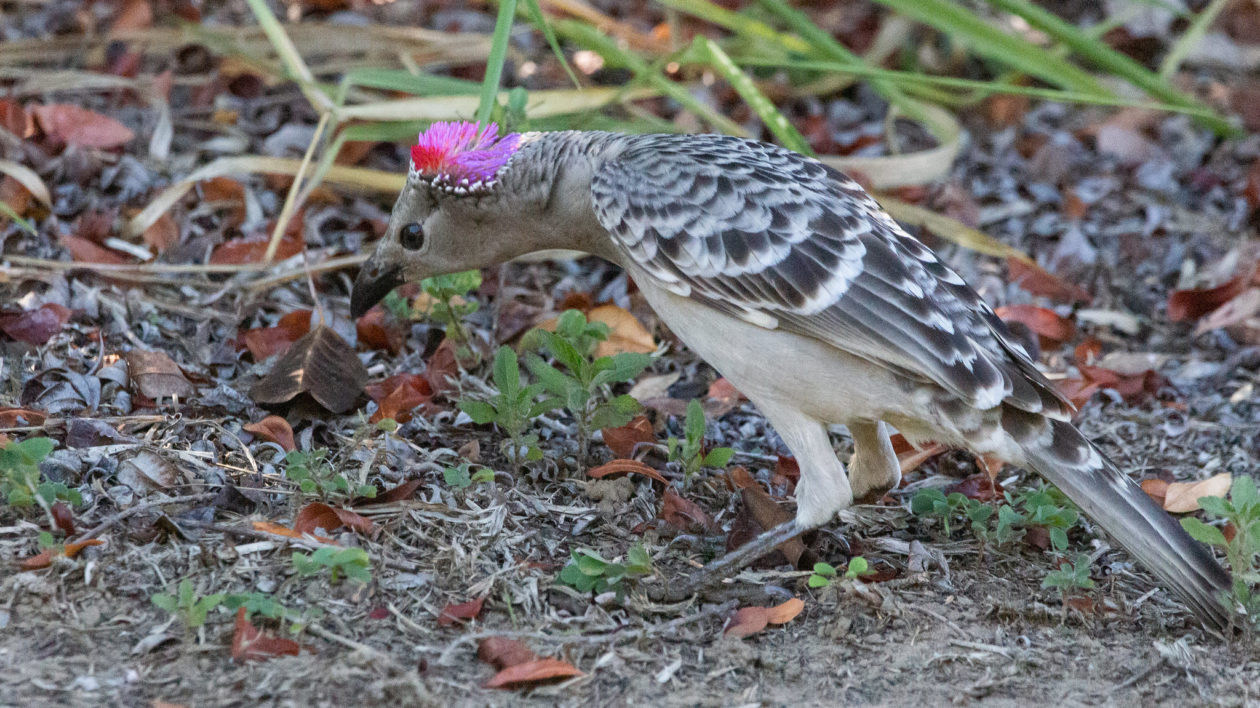
When presenting prized objects to potential mates, males keep their multicolored objects out of sight, presenting one after the other to females in a non-random order.
It gets even more interesting. Those same scientists discovered that the grey and white stage items (often shells and pebbles) are precisely ordered from smallest (near the bower) to largest (at the outer edge of the court). This arrangement creates an optical illusion that helps the male appear larger when he’s displaying.
Scientists aren’t exactly sure how all of these amazing adaptations contribute towards reproductive success. But we do know that the longer the female stays and watches, the more likely she will consent to mate.
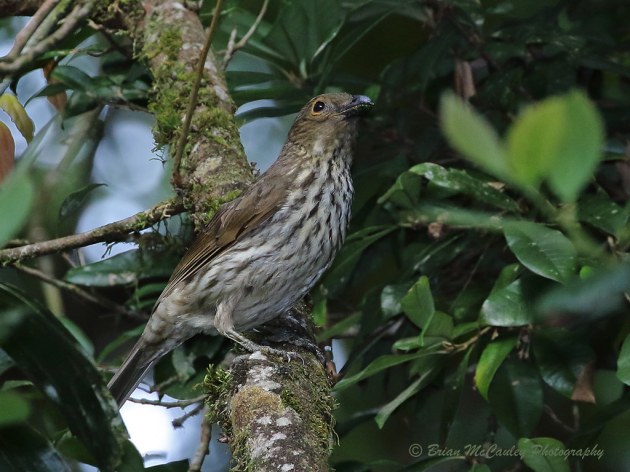
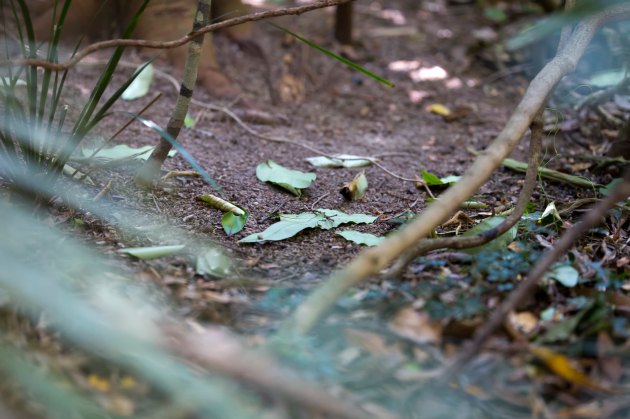
Tooth-billed Bowerbird, aka The Stagemaker
Tooth-billed bowerbirds are weird, even by bowerbird standards.
They’re found in the small patches of remnant rainforest in far north-eastern Queensland, at altitudes between 500 and 1,500 meters. Males and females are a drab, mottled brown, and even the most eagle-eyed birders are unlikely to see the tiny notches on their bill tip, which gives them their name. These ‘teeth’ are an adaptation for cutting leaves… which brings us to the next odd thing about this species.
Tooth-billed bowerbirds don’t actually build bowers. Instead, they groom the forest floor into a bare display court accented by large, upturned green leaves. Males entice females by singing loudly at the edge of the court. They’re also known to mimic the songs of other species.
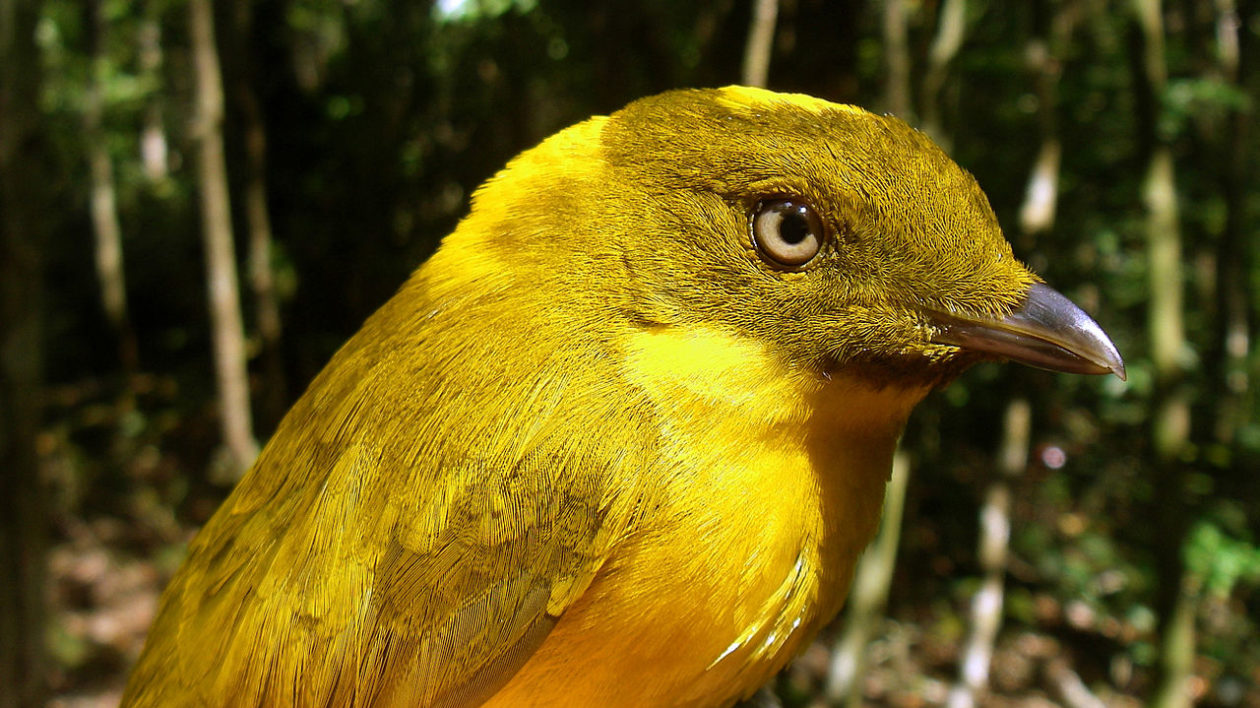
Golden Bowerbird: The Heritage Architect
These sun-colored birds are the smallest — and rarest — bowerbird species in Australia. Female golden bowerbirds are predictably drab, but the males are deep golden yellow, with bright undersides.
Golden bowerbirds are the only Australian species that don’t build avenue-shaped bowers. Instead, they construct a low platform of sticks that sits between two tall stick towers, each braced by a tree. The structure is decorated with grey-green moss, and white berries and flowers.
These bowers are built by multiple generations of males; when one male dies or is pushed out, another takes his place and inherits the bower. The oldest bowers on record date back up to 40 years and can reach heights of more than 2 meters (or 6.5 feet), making them the tallest of all bowerbird structures.
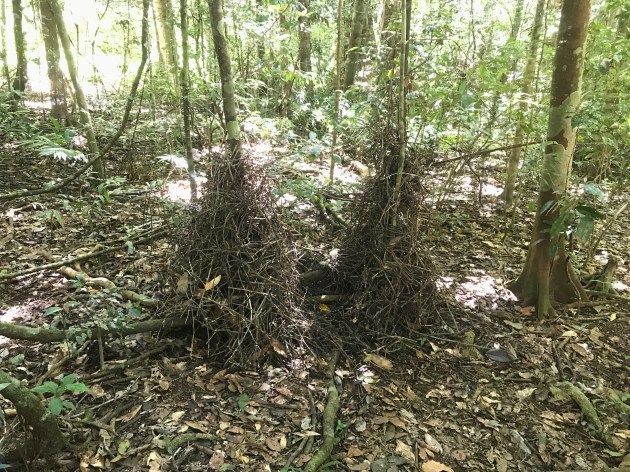

These are just four of the world’s bowerbird species that I’ve been lucky enough to see up close. But the fun doesn’t stop there.
The flame bowerbird sashays like a bug-eyed matador and pulses his pupils to seduce a mate. The MacGregor’s bowerbird builds an elaborate stick tower surrounded by a dance floor, and can mimic everything from barking dogs to playing children. And the Vogelkop bowerbird builds a stick yurt and decorates with heaping piles of blue, red, and orange objects, each sorted by color.
The more you learn, the more bowerbirds surprise, amaze, and delight.
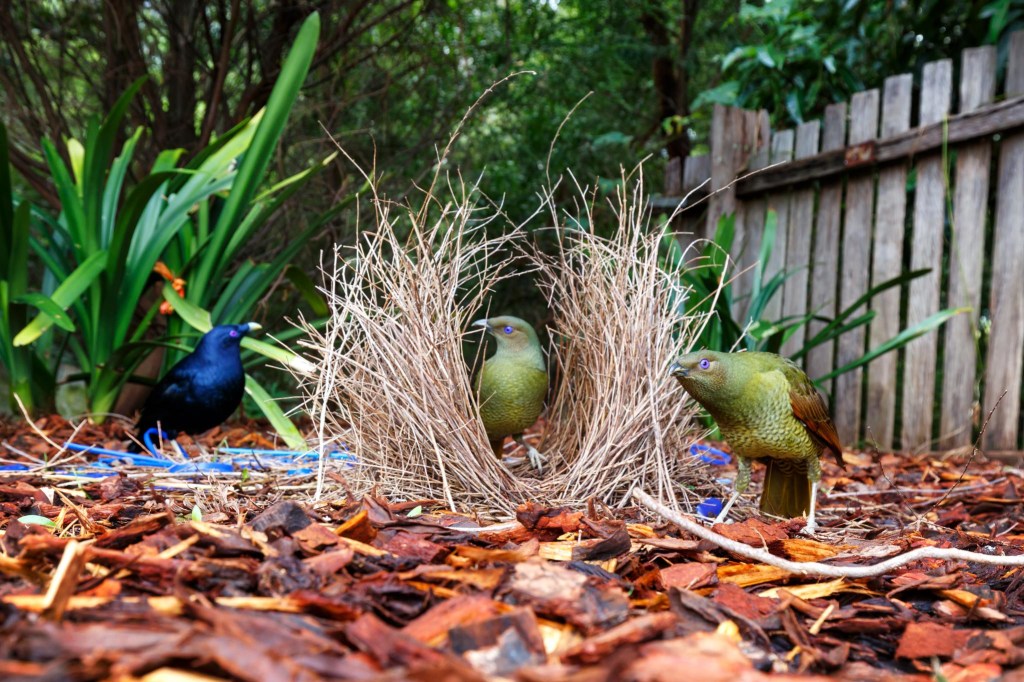



Thank you so very much for your article on bowerbirds !!! I relished reading about these incredible creatures ! Made me aware the natural world surrounding us human beings is utterly beautiful and immensely interesting !!!
A group of bower birds -three ave built a nest at the bottom of my grade Under a lemon tree. Not sure when they nest as it’s winter here